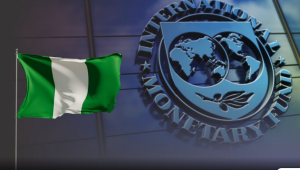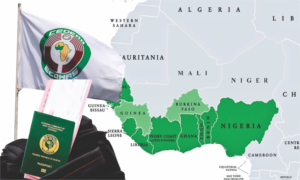IMF Raises Nigeria’s 2025 Growth Forecast to 3.4%
IMF Upgrades Nigeria’s Growth Outlook Amid Global Upward Revisions

The International Monetary Fund (IMF) has revised Nigeria’s economic growth forecast upward in its July 2025 World Economic Outlook (WEO), titled “Global Economy: Tenuous Resilience amid Persistent Uncertainty.” The IMF now projects Nigeria’s GDP to grow by 3.4% in 2025 and 3.2% in 2026, reflecting increases of 0.4 and 0.5 percentage points, respectively, from its April 2025 estimates of 3.0% and 2.7%.
Globally, the IMF also raised its growth projections to 3.0% for 2025 and 3.1% for 2026, up from 2.8% and 3.0% in April. The improved outlook is attributed to several key factors:
-
Front-loaded economic activity ahead of expected higher tariffs
-
Lower-than-anticipated effective U.S. tariff rates
-
Looser financial conditions driven by a weaker U.S. dollar
-
Fiscal expansion in several major economies
Sub-Saharan Africa (SSA) is also expected to post stronger growth than earlier projected, with GDP forecast at 4.0% in 2025 and 4.3% in 2026, up by 0.2 and 0.1 percentage points, respectively. The IMF attributes this to better-than-expected performances in several countries across the region. However, it cautions that structural weaknesses such as poor regional trade integration, inadequate fiscal reforms, and chronic infrastructure deficits (particularly in power and transport) continue to constrain the region’s potential.
In contrast, South Africa’s outlook remains unchanged, with growth projections holding steady at 1.0% for 2025 and 1.3% for 2026.
The IMF’s upgraded forecast for Nigeria closely aligns with our in-house projection of 3.7% GDP growth in 2025, driven largely by robust performance in telecommunications and digital services—key components of the Services sector. In Q1 2025, the Services sector expanded 4.3% year-on-year (YoY), contributing nearly 79% of total GDP growth for the quarter.
While the agriculture sector underperformed in Q1, a modest recovery is expected in H2 2025, supported by government intervention programs and the onset of the harvest season. The oil sector is also poised to contribute positively, with YoY growth estimated at 10.7%, while non-oil GDP is projected to grow around 3.3% YoY.
Nonetheless, downside risks to the outlook remain. Key challenges include:
-
Ongoing insecurity in major agricultural regions
-
Elevated inflation that could suppress consumer demand
-
Infrastructure bottlenecks in energy and transport
-
Tight monetary conditions limiting credit availability
Despite these risks, Nigeria’s revised growth forecast reflects cautious optimism amid a still uncertain global economic environment.









